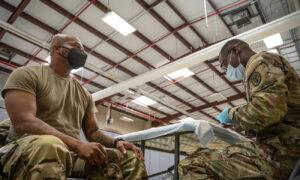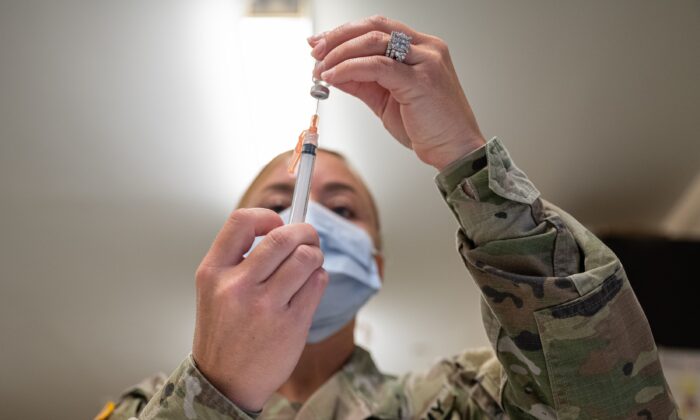US Military Study on Postvaccination Myocarditis Released
The U.S. military was among the first to detect heart inflammation cases among the vaccinated.
A small U.S. military study on postvaccination myocarditis has been quietly released, with authors saying they found no overt or subclinical heart inflammation.
Outside experts said the study did show some concerning signs and that the military researchers failed to explore those signs further.
With those facts in mind, “it is particularly important to understand the prevalence of subclinical myocarditis/pericarditis along with the potential for additional complications,” the authors of the new paper said.
The researchers recruited people who received a Pfizer or Moderna modified messenger RNA (mRNA) shot, were between 12 and 40 years of age, and were enrolled in TRICARE, which provides health care for many service members and their family members. The people received a second or subsequent dose of a vaccine between June 2022 and June 2023.
Participants visited investigators within 24 hours of and three to seven days after vaccination. Their symptoms, troponin T levels, and C-reactive protein were measured. Researchers also used electrocardiograms on the patients.
Thirty people ended up being part of the study, with 23 being active-duty military members. Four had a jump in troponin T, an indicator of subclinical heart damage, from 1 to 16 nanograms a liter after vaccination. However, the researchers said none had subclinical myocarditis because they defined subclinical myocarditis as an increase of more than 20 nanograms a liter. A fifth participant reported chest pain and shortness of breath, two possible signs of heart inflammation, but did not have a rise in troponin T.
“This is the first study to report on signs or symptoms of myocarditis/pericarditis collected through active surveillance following administration of mRNA vaccination in a military setting,” Dr. Richelle Homo, a pediatric resident at Madigan Army Medical Center and a fellow at Brooke Army Medical Center, and her co-authors wrote.
The authors acknowledged that the study was not large enough to estimate the incidence of myocarditis after vaccination “due to the unpredictable nature of the pandemic and delays in recruitment.” By June 2022, many people, including military members, had stopped getting COVID-19 vaccines.
“Nonetheless, the absence of myocarditis/pericarditis in this study offers some reassurance. As mRNA technology continues to advance, a deeper understanding of the incidence and extent of these complications will be necessary to ensure populations are well informed on the risks, benefits and potential need for monitoring following administration,” the authors added.
Experts Weigh In
Several experts who reviewed the paper said the study did not provide any reassurance due to its small population and the definition of subclinical myocarditis.
Defining subclinical myocarditis as troponin raised to a certain level without cardiac MRI cannot rule out the condition, doctors said.
The levels recorded in some of the participants indicate that there was “some damage to the myocardium,” according to Dr. Kirk Milhoan, a pediatric cardiologist. He said he’d have liked to see cardiac MRIs performed on those participants.
“Why don’t we look further and see what that is, as opposed to saying, ‘well, since nothing was over 20, it was just ignored,'” he told The Epoch Times.
Dr. Sanjay Verma, a cardiologist in California, said that elevated troponin, especially at low levels, can have non-vaccine causes and that cardiac imaging helps differentiate between the causes.
Dr. Verma said the study population was important, noting that researchers only included people who received at least their second dose of a vaccine.
“This inclusion criteria by definition would exclude those who may have already had myocarditis after dose 1. Furthermore, 70% of the study population received a fourth dose (i.e., they did not have myocarditis after the first 3). The study therefore is a self selected population of those who didn’t have myocarditis from dose 1-3,” Dr. Verma told The Epoch Times in an email.
“Therefore, the study doesn’t prove or disprove anything about the true rate of myocarditis or subclinical myocarditis in all comers who receive dose 1 and 2 of mRNA COVID-10 vaccination.”
Dr. Homo did not respond to emailed questions, nor did the Defense Health Agency, which funded the study.
The authors declared no conflicts of interest.
This article has been archived for your research. The original version from Epoch Times can be found here.






